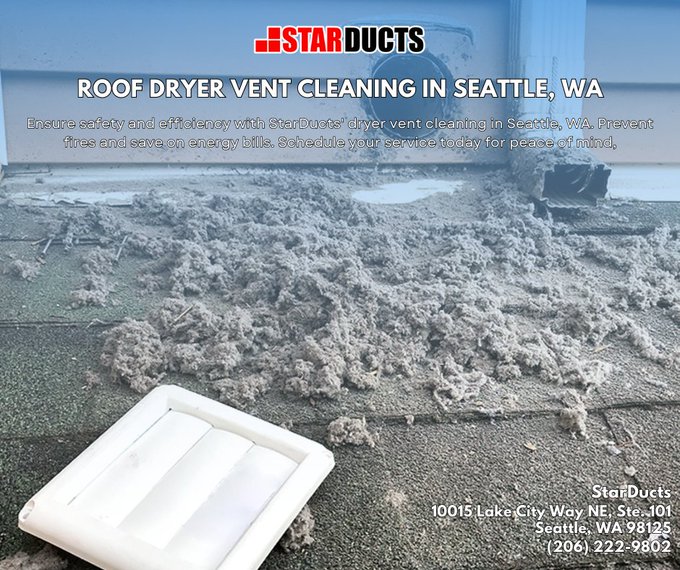Introduction
Every household has its share of appliances, but few are as essential as the dryer. It makes laundry day a breeze, turning damp clothes into cozy, dry garments in no time. However, with the convenience of this modern marvel comes an often-overlooked responsibility: cleaning the lint trap and vent. You might find yourself wondering, "How often should you clean your dryer lint trap?" Well, you’re in for a surprise! In this extensive article, we’ll delve deep into the importance of maintaining your dryer, how to do it effectively, and answer a myriad of related questions that may arise.
How Often Should You Clean Your Dryer Lint Trap? The Answer May Surprise You
Cleaning your dryer lint trap is a crucial step in ensuring your appliance operates efficiently and safely. But just how often should you be doing this? Most experts dryer duct cleaning recommend cleaning the lint filter after every load. Yes, you heard it right! This simple step can significantly enhance airflow and performance dryer air duct cleaning service while minimizing fire hazards associated with lint buildup.
Why Is Cleaning the Lint Trap So Important?
The primary purpose of the lint trap is to catch the fibers released from your clothing during drying. If not cleaned regularly, these fibers accumulate and restrict airflow. This not only prolongs drying times but can also lead to overheating and even potential fires. According to the National Fire Protection Association (NFPA), failure to clean dryer vents is a leading cause of home dryer fires.
What Happens If You Don't Clean Your Dryer Lint Trap?
Neglecting to clean the lint trap can result in several issues:
" width="560" height="315" frameborder="0" allowfullscreen>
- Reduced Efficiency: A clogged lint trap means longer drying times. Increased Energy Bills: More energy is consumed when dryers work harder due to restricted airflow. Fire Hazard: As previously mentioned, accumulated lint can ignite under high heat conditions.
Given these reasons, it’s clear that maintaining your dryer’s efficiency starts with regular cleaning of the lint trap.
Frequently Asked Questions About Dryer Maintenance
1. How often should dryer vents be cleaned?
Dryer vents should ideally be cleaned at least once a year. However, if you use your dryer frequently or notice any signs of clogging—like longer drying times or unusual smells—you might want to consider cleaning them more often.
2. Can I clean my dryer vent myself?
Yes! Many homeowners opt to clean their own dryer vents using specialized kits available at hardware stores. However, if you're dealing with extensive buildup or complicated ductwork, hiring a professional may be safer and more effective.
3. Is air duct cleaning the same as dryer vent cleaning?
Not quite! While both services involve removing debris from ducts, air duct cleaning focuses on heating and cooling systems’ ducts while dryer vent cleaning specifically targets exhaust ducts connected to your dryer.
4. What do pros use to clean dryer vent?
Professional cleaners typically employ specific tools such as rotary brushes and high-powered vacuums designed for HVAC systems. These tools help dislodge and remove stubborn lint build-up effectively.
5. How do you tell if your dryer vent is clogged?
Signs of a clogged vent include longer drying times, clothes that feel excessively hot after a cycle, a burning smell during operation, or visible lint around the outside vent opening.
6. What happens if you don't clean your dryer vent?
Failure to clean your dryer vent can lead to several problems: increased risk of fire due to overheating parts; higher energy bills; reduced lifespan of your appliance; and moisture build-up leading to mold growth in surrounding areas.
Maintaining Your Dryer: A Step-by-Step Guide
Now that we've established how crucial it is to keep both the lint trap and vents clean let’s explore how you can maintain them effectively.
Cleaning Your Dryer Lint Trap After Every Load
Remove Lint: After every load, pull out the lint filter and remove any accumulated lint. Wash It Occasionally: Every few months or so, wash the filter with soap and water to ensure there’s no residue left behind. Inspect for Damage: Regularly check for tears or damage in the mesh screen that could allow lint through.Deep Cleaning Your Dryer Vent Annually
To keep things running smoothly:
Disconnect Power: Always unplug your appliance before starting any maintenance. Remove Vent Hose: Disconnect the hose from both ends—the back of the dryer and where it exits outside. Clean Inside: Use a vacuum with an attachment or special brush kit designed for ductwork. Check Outside Vent: Ensure nothing blocks outside airflow—remove any debris or nests that may have formed around it. Reattach Everything: Once cleaned thoroughly, reattach all components securely before plugging back in.Signs That Indicate It's Time for Professional Cleaning Services
Even diligent homeowners may miss signs indicating they need professional help with their dryers:
" width="560" height="315" frameborder="0" allowfullscreen>
- Drying cycles take unusually long Clothes feel hotter than normal post-cycle Visible lint buildup around openings Strange noises emanating from within
If you notice these signs persisting despite regular maintenance efforts at home, reaching out for professional assistance might be necessary!
DIY vs Professional Cleaning Services: What's Best for You?
Many homeowners grapple with whether they should tackle their dryer's maintenance themselves or hire professionals.
Pros of DIY Cleaning
- Cost-effective solution Helps you learn about appliance workings Immediate access without waiting for appointments
Cons of DIY Cleaning
- Risky if not done correctly Limited tools compared to professionals May not eliminate all clogs
Pros of Professional Services
- Thorough inspections using specialized equipment Experience handling complex issues Saves time compared to DIY methods
Cons of Professional Services
- Costlier option Scheduling conflicts may arise
Ultimately deciding between DIY versus hiring professionals boils down to personal comfort levels regarding appliance maintenance!
Indoor vs Outdoor Vents: A Comparative Insight on Maintaining Efficiency
Indoor dryers are becoming popular in various homes where external ventilation isn’t feasible due mainly due space constraints—and they require unique upkeep strategies compared outdoors versions:
Maintaining Indoor Vents
1) Use filters specifically designed for indoor setups. 2) Regularly empty collection trays filled by condensation processes caused by these setups.
By carefully monitoring indoor settings unique challenges arise from relying solely on recirculated air throughout cycles instead fresh air drawn from outside sources allows less moisture accumulation overall!
Conclusion
In conclusion, understanding how often you should clean your dryer lint trap isn’t just about maintaining convenience; it's about ensuring safety within our homes too! By committing yourselves towards regular upkeep alongside investing time into learning proper techniques—whether tackling tasks independently opting rely upon skilled technicians—we can extend lifespan appliances while safeguarding families against potential hazards posed by neglecting this essential duty!
So next time someone asks YOU “How often should you clean YOUR Dryer Lint Trap?”—you’ll know exactly what answer will surprise them most!
For more tips on maintaining cleanliness within household appliances like dryers visit local service providers online such “Duct Cleaning Near Me” or reputable reviews sites like "Starducts Dryer Vent Cleaning Reviews".

